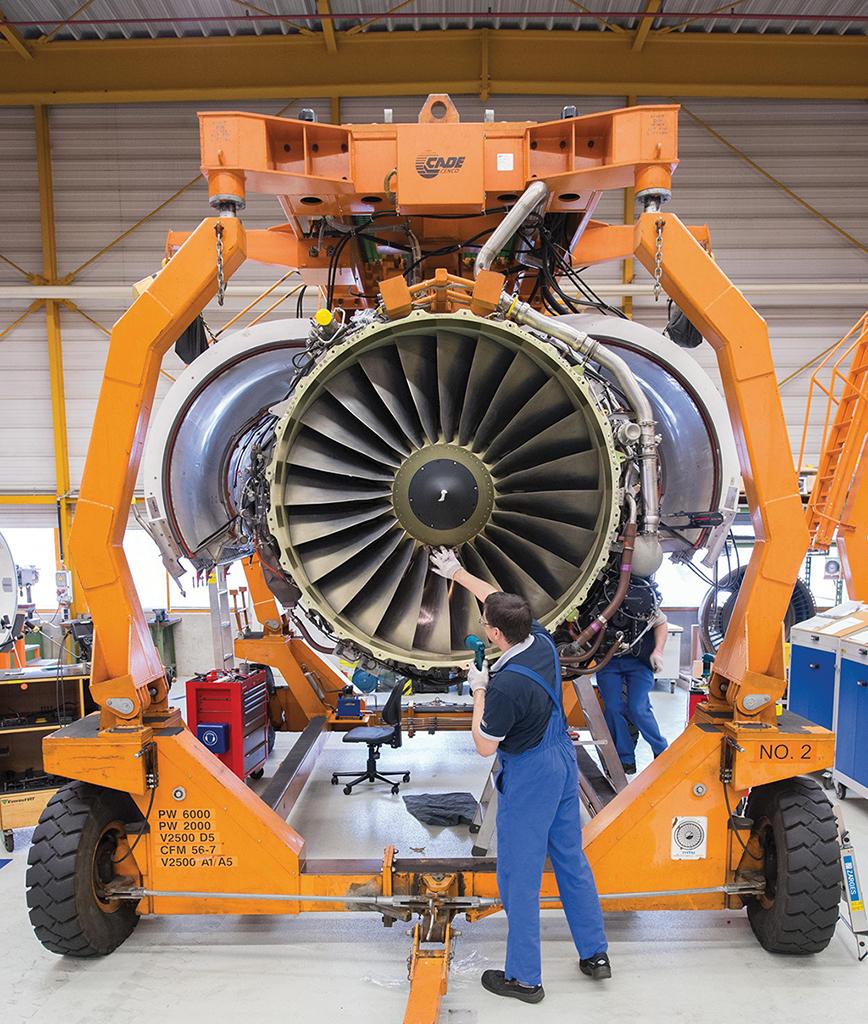Is The Rising Parts Demand A Blessing For Suppliers? | 部品需要の高まりはサプライヤーにとっての福音となるか?

航空会社の活動が再び活性化し、新造機の生産量が安定してきたことで、民間機サプライチェーンにおける部品の流通量が増加している。これにより、航空機メーカーの減産により生じた過剰在庫の消化が進み始めた。
サプライヤーにとっては、これは良いニュースといっていいだろう。しかし、活動が活発になることで、短期的には問題も生じる。特に部品需要の急増によるボトルネックが懸念されており、1年前はほぼゼロだった需要が、コロナ危機以前の通常時の水準に戻るという予想もある。また多くのサプライヤーは、航空会社が中古部品等の代替手段をいつ、どの程度活用していくかを考慮する必要がある。これは、自社製品の需要減少につながるからだ。
昨年、多くの航空会社はコロナ危機がもたらす長期的な影響を見定めるため、大部分の機材の運航を停止し、メンテナンスも抑制した。中には、EasyJet社のようにメンテナンスを前倒しし、環境の好転に備えた会社もある。しかし他の大部分は、資金の温存・稼働率の低迷・コロナ危機後のフリート規模の不確実性などを理由に、MROへの支出は必要になる時が来るまで止める戦略を取った。これは国際線の運航停止と同じ考え方だ。
多くの部品サプライヤーにとって2発目の打撃となったのは、エアバス社およびボーイング社が当面の旅行需要の減少により顧客が納入延期を求めたことを受け、主要プログラムの大半で減産を発表したことだ。これにより、一部のサプライヤーは部品納入を停止し、以前の高い生産率を維持するために準備された過剰な在庫を消化することにつながった。

この需給バランスをさらに複雑にしているのが、 航空会社が保有機材を整理したことで生じた中古部品を巡る不確実性だ。エアバスA340やA380、旧型のボーイング747などはコロナ危機後の復活は望めないが、多くのナローボディ機や双発ワイドボディ機については、旅行需要の回復ペースや貨物機への改装など、退役計画を左右する要素が数多く存在する。
今後数年間で人や貨物を輸送するために航空機が何機必要になるかを現時点で判断することは不可能なため、航空会社やリース会社は今は待つ他ない。
多くの業界関係者は、退役が加速し、それらの機材は追って解体されると考えている。ただし、その時期や機種はまだ不透明だ。
Aviation Weekでは、2024年にかけて座席数19席以上の民間旅客機780機が退役すると予想しており、これは2020年の予測を10%上回る。
Aviation Week Intelligence NetworkのCommercial Aviation Fleet Discoveryデータベースによると、4月には5,600機以上の機材が定期運航も長期保管もされておらず、これは稼働機材の20%以上を占めている。
これらのうち何機が定期運航を再開するかによって、今後のサプライチェーンは大きく左右される。
中古部品を巡る不確実性や、航空貨物の輸送容量不足といった物流問題、さらには航空会社のコスト削減指向は、もうひとつの部品供給源にチャンスをもたらすだろう。それは、純正部品の代用品を定める認証制度、PMA(Parts Manufacturer Approval)を取得した部品のメーカーだ。
航空会社の倒産や所有機材の仕様統一などは、さらなる中古部品の供給をもたらす。AvAir社の4月の発表を例に挙げると、同社はIberia Maintenance and Engineering社から150万点の消耗品と、3万点の回転部品を購入した。
Boeing Global Services社の民間機向け部品担当副社長・Giovanni Spitale氏は、このような動きにより「一時的に部品の需給バランスが崩れ、そこからあらゆる他分野の需給の流れに影響が波及するだろう」と述べている。
MRO Prospectorで契約情報を検索し、受注機会を発見しましょう
MRO Prospectorは民間機MRO(メンテナンス・修理・オーバーホール)契約の特定、予想される個別MRO案件の確認、将来の航空機およびエンジンのフリート規模を把握するのに役立つオンラインツールです。この製品は、航空会社やMRO事業者とのビジネスチャンスを追求するために、MROマーケットにどのような機会があるのかを知りたい方に向けて作られています。 貴社向けにカスタマイズされた製品デモをリクエスト。
Commercial aviation supply-chain parts volume is growing as airline activity picks up and new-aircraft production rates stabilize, eating up excess inventory that built up as manufacturers adjusted rates downward.
For suppliers, this is mostly good news. But more activity brings near-term concerns as well. Chief among them are bottlenecks created by a jump in demand, from nearly zero a year ago to what some are projecting will soon be historical annual norms in the high single digits. Many suppliers also must factor in the timing and scope that alternative sources such as used and surplus material will play in meeting operators’ needs—and reducing demand for their products.
Most airlines stopped spending on maintenance last year as they idled huge percentages of their fleets and waited out the COVID-19 pandemic’s ramifications. Some, such as EasyJet, pulled maintenance forward to ensure they would be ready when business turned around. But for the most part, the need to conserve cash, a lack of utilization and uncertainty on post-downturn fleet composition meant that MRO spending became like most intercountry travel—unless it was essential, it was not happening.
For many parts suppliers, a second blow came when Airbus and Boeing announced plans to cut new-aircraft production rates on most major programs to align with customers’ quickly changing delivery needs that matched lower near-term demand. This led some suppliers to halt parts shipping as manufacturers slowed production and used up suddenly excess inventory delivered to support the previous higher rates.

Further complicating the supply/demand balance is continued uncertainty around used serviceable material (USM) and surplus parts created as airlines simplify their fleets. While some aircraft types, such as the Airbus A340s and A380s and older Boeing 747s, will not see a post-pandemic renaissance, the recovery’s pace and factors such as cargo-conversion demand will affect retirement plans for many narrowbodies and twin-aisles.
Determining how many aircraft will be needed to move people and packages over the next few years requires forecasting abilities that nobody has, so operators and lessors must wait.
Many in the industry agree that retirements will climb and part-outs will follow. Less certain is the timing and asset mix.
Aviation Week projects an average of about 780 retirements of commercial aircraft certified to carry at least 19 seats through 2024—a 10% bump over 2020’s figure.
More than 5,600 aircraft were neither flying regularly nor stored in April, the Aviation Week Intelligence Network’s Commercial Aviation Fleet Discovery database shows, representing more than 20% of the active fleet.
How many of them return to line-flying will have a significant influence on the supply chain in the coming years.
USM uncertainty, broader logistical challenges such as constrained airfreight capacity and airlines’ desire to keep costs down should create opportunity for another supplier source—parts manufacturer approval (PMA) specialists that provide alternatives to OEM-made material.
Airline bankruptcies, as well as decisions that reduce or eliminate subfleets, create still another parts-supply source—surplus parts pools. Examples include AvAir’s April announcement that it bought 1.5 million consumables and 30,000 rotables from Iberia Maintenance and Engineering.
The aggregate effect of such deals “will temporarily imbalance supply and demand, which will have an impact on all of the other supply and demand streams,” says Boeing Global Services’ vice president of commercial parts, Giovanni Spitale.
